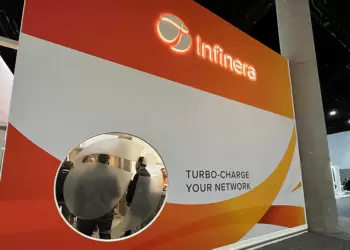Infinera and Sumitomo Electric completed the first testing of point-to-multipoint coherent pluggable transceiver technology in Japan.
The XR optics point-to-multipoint integration testing , which was conducted in Infinera’s Tokyo lab facilities, was implemented over an existing PON network using Infinera ICE-X 100G and 400G coherent pluggables transceivers hosted in the Sumitomo Electric FTU 9100 metro/access aggregation switch. The test showcased how XR optics can increase capacity and reach by orders of magnitude by overlaying coherent wavelengths over existing single-fiber (bidirectional) PON networks.
The testing included demonstrations of the following: high-speed business services over existing single-fiber PON infrastructure, simplified network aggregation for emerging services and applications such as 5G and edge computing, and efficient point-to-multipoint metro traffic transmission over existing optical line systems. These demonstrations underscore the value XR optics bring to service providers to cost-efficiently increase capacity and expand service offerings.
“This industry-first testing in Japan reinforces Infinera’s dedication to innovation and our commitment to solving our customers’ toughest challenges, especially as bandwidth growth at the network edge drives demand for new approaches to metro and access transport architectures,” said Naosuke Akiyama, Japan Country Manager, Infinera. “We are excited to partner with Sumitomo Electric to showcase a wide variety of cost- and power-efficient pluggable optical solutions with unique levels of intelligence, automation, and programmability.”
“We have taken a big step toward optical network innovation by collaborating with Infinera on its XR optics technology, which enables point-to-multipoint network topology,” said Kazutaka Kawamoto, General Manager, Information Network R & D Center, Sumitomo Electric.
















